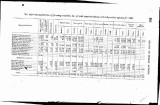| Title |
Report on Indian Affairs by the Acting Commissioner for the Year 1867 |
| Subject |
Indians of North America; Indian reservations; Federal government; Black Hawk, approximately 1832-approximately 1890; White people--Relations with Indians; Land use; Agriculture; Indians of North America-Education; Annuities; Tribal government; Ute Indians; Shoshoni Indians; Language and languages; Names; Treaties; Children; Education; Indians of North America--Education; Indigenous peoples--North America |
| Keywords |
Indian Agency; Reservations; Annual Report; Kanosh; Black Hawk; Indian; White Relations; Tabby; Tribal Funds; Washakie; Native Americans |
| Publisher |
Digitized by J. Willard Marriott Library, University of Utah |
| Tribe |
Ute; Shoshone |
| Band |
Bannock; Uintah |
| Language |
eng |
| Description |
Excerpts concerning Utah from the Annual Report of the Commissioner of Indian Affairs - Courtesy of the University of Wisconsin Digital Collections. The Secretary of the Interior reports that salaries within the Bureau of Indian Affairs are insufficient and that a system must be devised by which "civilization" among the Indians can be fostered. The Commissioner of Indian Affairs presents reports on various superintendencies across the U.S. The Commissioner reports that the population of Indians in Utah is diminishing but that they are peaceable. The Commissioner asks that funds be appropriated to the Shoshones and Bannocks. The Utah Superintendent of Indian Affairs provides demographic data, descriptions of the condition of each tribe and band, and reports on confrontations, especially those involving Black Hawk. The Superintendent describes conditions on the Uintah Ouray , including agricultural progress and the status of tribal accounts. Uintah Ouray Reservation Agent Rhoades makes recommendation regarding the disbursal of tribal funds and the distribution of land. Ft. Bridger agent Luther Mann describes relations between the various Shoshone bands. Various other reports provide details about Black Hawk's affairs and whereabouts, confrontations with "hostile Indians", etc |
| Type |
Text |
| Coverage |
Uintah and Ouray Indian Reservation (Utah); Utah; Washington (D.C.); Fort Bridger (Wyo.); Nevada; California; Arizona |
| Format |
application/pdf |
| Rights |
Digital Image © 2011 America West Center. All Rights Reserved |
| ARK |
ark:/87278/s6r23x27 |
| Date |
1867 |
| Spatial Coverage |
Uintah and Ouray Indian Reservation (Utah); Utah; Washington (D.C.); Fort Bridger (Wyo.); Nevada; California; Arizona |
| Setname |
uaida_main |
| ID |
368730 |
| Reference URL |
https://collections.lib.utah.edu/ark:/87278/s6r23x27 |

































































